- Home
- John Updike
Higher Gossip Page 25
Higher Gossip Read online
Page 25
When Sir dies, this household becomes a typical Toni Morrison collection of “unmastered women,” each spinning “her own web of thoughts unavailable to anyone else.” Their vulnerable isolation is mitigated but not wholly relieved by the presence of Scully and Willard, two indentured laborers, homosexual and white, whom Sir hired to work on his quixotically ambitious mansion. After Sir’s death, they continue to work for the widow’s pay. With amiable competence the two men deliver a child that Sorrow, who watched Lina drown her first-born, has conceived. The infant safely born, Sorrow, long addled in the head by her shipboard traumas and her illusion of an advisory companion called Twin, regains focus and, to cap this saga of freighted names, renames herself:
She had looked into her daughter’s eyes; saw in them the gray glisten of a winter sea while a ship sailed by-the-lee. “I am your mother,” she said. “My name is Complete.”
From her first novel, The Bluest Eye (1970), Morrison has worked, in line with the celebrated Faulknerian dictum that the past is not past, in a historical vein. The Bluest Eye, bristling with Sixties literary trickiness and protest, takes place in 1940–41, and includes an impressionistic map of black flight from the South during the Depression; stepping momentarily into the present, the author offers a retrospective history of the structure “on the southeast corner of Broadway and Thirty-fifth Street in Lorain, Ohio,” which for the time of the narrative was occupied by the doomed and desperate family of the thorough loser Cholly Breedlove. Sula (1974) opens with an elegiac sketch of a black neighborhood called the Bottom and dates its chapters from 1919 to 1965. Song of Solomon (1977) begins four years after Lindbergh’s 1927 transatlantic flight, and Beloved (1987) takes place a few years after the Civil War. The shorter novels that have followed—Jazz (1992), Paradise (1997), and Love (2003)—share a reminiscing narrator and a sense of the bygone as reverie, a dream that it is a struggle to remember and piece together.
A Mercy takes us deeper into the bygone than any of Morrison’s previous novels, into a Southern seaboard still up for grabs: “1682 and Virginia was still a mess.” Indian tribes haunt the endless forest; the colonial claims of the Swedes and the Dutch have been recently repelled, and “from one year to another any stretch might be claimed by a church, controlled by a Company or become the private property of a royal’s gift to a son or a favorite.” Jacob Vaark, coming from England to take possession of 120 acres bequeathed to him by an uncle he never met, rides from Chesapeake Bay into “Maryland which, at the moment, belonged to the king. Entirely.” The advantage of this private ownership is that the province allows trade with foreign markets, and Vaark is more trader than farmer at heart. The disadvantage is that “the palatinate was Romish to the core. Priests strode openly in its towns; their temples menaced its squares; their sinister missions cropped up at the edge of native villages.” His claim lies in Protestant Virginia, “seven miles from a hamlet founded by Separatists” who “had bolted from their brethren over the question of the Chosen versus the universal nature of salvation.”
In A Mercy, Morrison’s epic sense of place and time overshadows her depiction of people; she does better at finding poetry in this raw, scrappy colonial world than in populating another installment of her noble and necessary fictional project of exposing the infamies of slavery and the hardships of being African-American. The white characters in A Mercy come to life more readily than the black, and they less ambiguously dramatize America’s discovery and settlement. When Vaark strides ashore through the Chesapeake surf, he is Adam treading the edge of an immense Eden:
Fog, Atlantic and reeking of plant life, blanketed the bay and slowed him.… Unlike the English fogs he had known since he could walk … this one was sun fired, turning the world into thick, hot gold. Penetrating it was like struggling through a dream.
When Rebekka sails to join him, the indignities of steerage are made vivid—she says, “I shat among strangers for six weeks to get to this land”—as are the squalor and the gory public executions of the London she is escaping:
The intermittent skirmishes of men against men, arrows against powder, fire against hatchet that she heard of could not match the gore of what she had seen since childhood. The pile of frisky, still living entrails held before the felon’s eyes then thrown into a bucket and tossed into the Thames; fingers trembling for a lost torso; the hair of a woman guilty of mayhem bright with flame.
When she disembarks in the New World, “the absence of city and shipboard stench rocked her into a kind of drunkenness that it took years to sober up from and take sweet air for granted. Rain itself became a brand-new thing: clean, sootless water falling from the sky.”
In so keenly relished a near-virgin environment, the diverse “unmastered women” blend into the moonlit trees like guilty phantoms in Hawthorne. Rebekka, who had disembarked as a “plump, comely and capable” young woman, becomes Mistress, and, after gamely coping with the wilderness, the deaths of three infant children and of a five-year-old daughter, and her husband’s untimely dying, takes to her bed in despair: “The wide untrammeled space that once thrilled her became vacancy. A commanding and oppressive absence.” She falls ill, and orders Florens to find a free black man she thinks might cure her, a blacksmith once hired by Jacob to help build “the grandest house in the whole region”—an unfinished mansion that becomes haunted by its dead master. Florens, travelling alone through the forest primeval, finds the blacksmith living in a cabin, where he has taken in a small male foundling. He returns to Mistress and effects a talking cure: he is asked, “Am I dying?” and answers, “No. The sickness is dead, not you.” Back in the cabin, Florens proves to be a poor babysitter for the foundling and injures his arm. The blacksmith, who had been her lover, is displeased.
Much has been made of Florens’s love for the blacksmith:
The shine of water runs down your spine and I have shock at myself for wanting to lick there. I run away into the cowshed to stop this thing from happening inside me. Nothing stops it. There is only you. Nothing outside of you. My eyes not my stomach are the hungry parts of me. There will never be enough time to look how you move.
Alternating chapters take up her stream of consciousness during the hazardous journey to deliver Mistress’s message and reunite with the blacksmith. Morrison has invented for her feverish mind a compressed, anti-grammatical diction unlike any recorded patois: “Both times are full of danger and I am expel.… With you my body is pleasure is safe is belonging. I can never not have you have me.… I dream a dream that dreams back at me.” But the blacksmith rebuffs her love in his own firm diction: “Own yourself, woman, and leave us be.… You are nothing but wilderness. No constraint. No mind.” This rejection and her subsequent violence are the bitter fruit, then, of the mercy that Jacob Vaark showed her when she was eight years old.
On the book’s last pages, Florens’s mother somehow returns, as a disembodied voice, and recounts her enslavement in Africa (“The men guarding we and selling we are black”), the Middle Passage in “a house made to float on the sea,” her arrival in the hot sun and cane fields of Barbados, and her “breaking in”—her rape—by white men who apologize and give her an orange as consolation. Florens and her brother resulted, and the moment of Vaark’s mercy is recalled, but, in view of the dismal outcome, to sadly little point. Of the other characters, Lina remains a stoic source of domestic order and a nurturing substitute mother to Florens when she is docile, before love turns her feral. Sorrow/Complete is, in this household of orphans, the hardest to picture, her color included. By her own account, she had always lived on a ship and was brought to land by “mermaids. I mean whales.” The insemination that produced her two pregnancies is mysterious, at least to me. She seems less a participant in the action than a visitor from the Land of Allegory, a “curly-haired goose girl” whose only human skills are sewing, acquired on shipboard, and, eventually, motherhood.
In the dark stew of seventeenth-century America, procreation seems the one intelligible process
available to slave, servant, and mistress, and love and disease threaten to make martyrs of them all. Motherhood is so powerful a force in Morrison’s universe as to be partly malevolent; its untidy agents, menstruation and sex and birth, come with a menacing difficulty. This author’s early novels were breakthroughs into the experience of African-Americans as refracted in the poetic and indignant perceptions of a black woman from Lorain, Ohio; as Morrison moves deeper into a more visionary realism, a betranced pessimism saps her plots of the urgency that hope imparts to human adventures. A Mercy begins where it ends, with a white man casually answering a slave mother’s plea, but he dies, and she fades into slavery’s myriads, and the child goes mad with love. Varied and authoritative and frequently beautiful though the language is, it circles around a vision, both turgid and static, of a new world turning old, and poisoned from the start.
1When they hold hands for the first time, Salvo dotingly observes, “Here they are, my half-brown, half-Congolese hand and Hannah’s authentic all-black version, with its pinky-white palm and fingernails.” Later, she describes herself as “black-black.”
2They deduce, wrongly, that she is American because in pleading with them she uses the word “Please.” Also, in their minds, “It was well known that Americans were complainers when fate went against them. Americans believed they occupied a unique place in the world, a place under God’s special benevolence. And if God was absent, anyone would do. The women were no better than the men. Wherever they went in the world they expected cooperation, and if they did not get it they complained.”
3Not the only similarity with her first, fuller novel: both involve benevolent Catholic institutions (for unwed mothers, for retired priests), contain an absent (dead or aloof) mother, and end with a young heroine in the dark as to the identity of one parent.
AMERICANA
Famous Aimee
AIMEE SEMPLE MCPHERSON AND THE RESURRECTION OF CHRISTIAN AMERICA, by Matthew Avery Sutton. 351 pp. Harvard University Press, 2007.
The name of Aimee Semple McPherson resonates faintly now—a rather comical run of syllables compounded of a first name bestowed by a rapt young mother, Minnie Kennedy, in an Ontario farmhouse in 1890, and the last names of Aimee’s first two husbands, Robert Semple and Harold McPherson. Yet in the 1920s and 1930s she was one of the most famous women in America—for a time, the most famous, according to one biographer. After running away from her second husband, in 1915, she became a full-time revival preacher, in a white dress and a military cape. She not only preached, she healed, having herself experienced a broken ankle and torn ligaments abruptly repaired by prayer. She wrote:
I suddenly felt as if a shock of electricity had struck my foot. It flowed through my whole body, causing me to shake and tremble under the power of God. Instantaneously my foot was perfectly healed.
Between 1916 and 1923, Sister Aimee, as she called herself, travelled the glory trail coast to coast six times and preached in more than a hundred cities. She and her mother arrived in Los Angeles in 1918, and within a few years she decided to build an inexpensive wooden tabernacle there, for local meetings; on New Year’s Day of 1923, she dedicated the Angelus Temple, near Echo Park, at the corner of Sunset and Glendale boulevards. It seated more than five thousand, was topped by a rotating lighted cross visible from fifty miles away, and became, thanks to McPherson’s eloquence, fervor, and theatrical flair, a leading Los Angeles institution and tourist attraction. She extended her ministry with an evangelical newspaper, The Bridal Call, and, beginning in 1924, with foresighted employment of a novel medium, radio, broadcasting sermons and services over her own station, KFSG (Kall Four Square Gospel).
National celebrity followed upon a series of newsworthy personal scandals, of which the most headlined, in 1926, involved her disappearance from Venice Beach and her reappearance, five weeks later, in a Mexican border town. She claimed to have been kidnapped by a trio of malefactors named Steve, Jake, and Mexicali Rose; she escaped, she said, from an isolated shack by sawing through her bonds with the jagged edge of a syrup can and walking for seventeen hours across the desert. For all its suspect details (she emerged from her desert ordeal neither sunburned nor dehydrated, wearing unscuffed shoes and a watch that she had not taken with her to the beach), she stuck to her story through a number of hearings and trials. An alternative story, which the newspapers were quick to air, held that she had spent the missing five weeks trysting in Carmel or elsewhere with Kenneth Gladstone Ormiston, the handsome, dapper, and married radio engineer who had been in charge of KFSG’s operations. He and Aimee had daily technical exchanges, which some eavesdroppers considered suspiciously friendly, if not raucous, in tone. The Los Angeles district attorney investigated the alleged abduction and then had her arrested, along with her mother and Ormiston, on charges of “corruption of public morals, obstruction of justice, and conspiracy to manufacture evidence.” The public and the press couldn’t get enough of the trial—grandstands were erected in municipal court—though in the end all charges were dismissed. McPherson’s Foursquare Gospel continued to be rousingly proclaimed at the Angelus Temple, and her thousands of devotees remained loyal during the furor, but her reputation had taken on a taint, a fascinating hint of sexual errancy, that lasted until her death. She was only fifty-three when she died, of a probably accidental overdose of barbiturates, in 1944.
Her fame and her aura transcended those of a religious figure; she consorted with Hollywood stars as an equal and charmed even H. L. Mencken, no booster of evangels. (He felt, with reason, that she was persecuted by the Babbitts and official bullies of Los Angeles.) The International Church of the Foursquare Gospel, spawned by the Angelus Temple, which at her death included 410 churches, two hundred mission stations, and about twenty-nine thousand members, has come to involve, under the leadership of her son, Rolf, and his successors, more than twenty-five thousand churches, a membership approaching two million, and a third of a billion dollars in funds. The story of her life, which she dramatized in a number of high-flown and breathlessly candid memoirs and sermons, was retold by two biographers in the early Nineties, Edith Blumhofer and Daniel Mark Epstein, and is now told again, with a determined sociological thrust, by Matthew Avery Sutton, in Aimee Semple McPherson and the Resurrection of Christian America.
Sutton, in three copious pages of acknowledgments, records that his uncle is a “longtime Foursquare minister” and that his grandmother’s life was “a testament to the power of the Foursquare gospel.” Though he maintains in his prose the dispassionate scholarly demeanor befitting a publication of the Harvard University Press, his conclusion amounts, sixty years after her death, to a reselling of Sister Aimee: “From her location in Hollywood, Aimee Semple McPherson reshaped and redefined the old-time religion in the United States, in effect resurrecting Chris-tian America.” Sutton’s reaching for such a high estimate of his subject’s historical importance slights the aspects of her personal story that would feed and deepen a psychological portrait. He mentions Blumhofer’s emphasis on “the evangelist’s Canadian roots and the religious context in which she matured,” as if to admit that his own emphasis is elsewhere.
Sutton begins by describing a 1934 pageant that finds her magic in full flower, and then flashes back to the opening of her spectacular megachurch. Her formative years, up to her marriage to Robert Semple and his death, in Hong Kong, from dysentery and malaria contracted on the Chinese mainland, are covered in three brisk pages, whereas Epstein’s biography, Sister Aimee, takes nearly seventy pages to reach the same point. We learn that she was a headstrong, clever, religiously troubled, and not always manageable girl, the only child of an orphan mother greatly attached to the brassy, egalitarian, and unconventional Salvation Army. Minnie Kennedy, married at fifteen to a man of fifty, had prayed for a daughter, and Aimee was raised with the maternal indulgence and high hopes more usually bestowed on a son. Mother and daughter were alike ambitious, and when Aimee found her religious vocation Minnie went with her and managed ever
ything, including the finances. Neither was cut out for marital subservience; Aimee was to write that her mother was early “compelled to acknowledge that she was caught in the devil’s net,” though James Kennedy—a devout Methodist, a choir director—was, by all outward signs, a kind and steady husband.
To the heady blend of her parents’ different versions of Christian devotion was added Aimee’s exposure to Darwinism and her exploration of such worldly delights and theatrics as rural Ontario provided. She was rescued from worldliness by love at first sight with a tall Irish-immigrant evangelist, Robert Semple, who introduced her to a radical new religious movement, Pentecostalism. Its hallmarks were faith healing, the millennial belief that the Second Coming was imminent, and glossolalia, or speaking in tongues. After days of self-torment, sleeping and eating little but praying almost continuously, Aimee managed this last sign of inner baptism. She described the experience in her writings as a battering “through a thick stone wall that was growing as thin as tissue paper,” and then as a “floating upon the billowing clouds of glory.” Paraphrasing the Biblical account of Pentecost, in Acts 2:4, she declared, “Then suddenly, out of my innermost being flowed rivers of praise in other tongues as the Spirit gave utterance.” Of her romance with Semple, Epstein says, “At last she had broken through to him.” They married six months later and went as missionaries to China. Her husband, on their ill-fated mission, witnessed what she herself calls hysterics. Horrified by an odorous Hindu cremation occurring on the street below their windows, she began screaming. When Semple tried to comfort her, she relates:

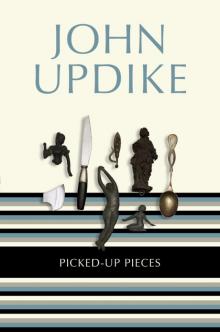 Picked-Up Pieces: Essays
Picked-Up Pieces: Essays Bech: A Book
Bech: A Book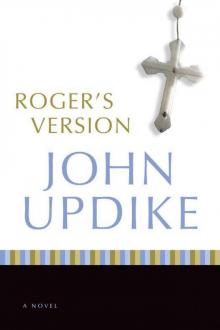 Roger's Version: A Novel
Roger's Version: A Novel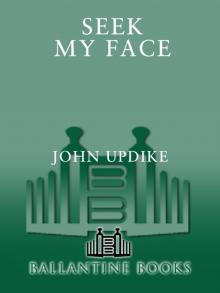 Seek My Face
Seek My Face The Carpentered Hen
The Carpentered Hen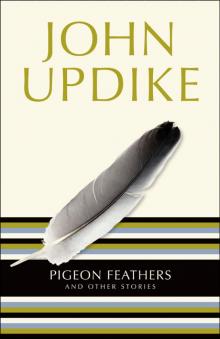 Pigeon Feathers: And Other Stories
Pigeon Feathers: And Other Stories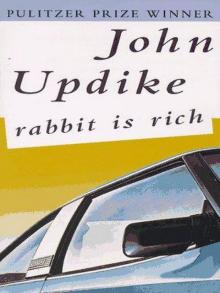 Rabbit Is Rich
Rabbit Is Rich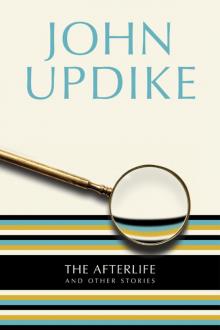 The Afterlife: And Other Stories
The Afterlife: And Other Stories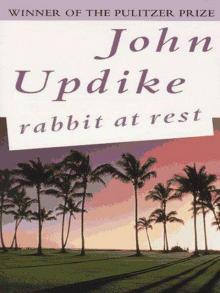 Rabbit at Rest
Rabbit at Rest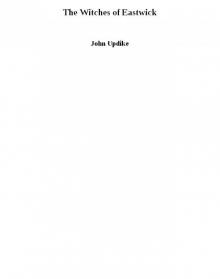 The Witches of Eastwick
The Witches of Eastwick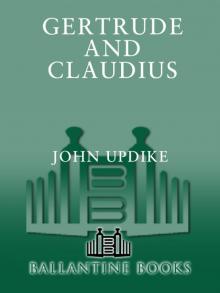 Gertrude and Claudius
Gertrude and Claudius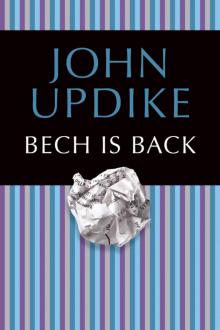 Bech Is Back
Bech Is Back Hub Fans Bid Kid Adieu: John Updike on Ted Williams
Hub Fans Bid Kid Adieu: John Updike on Ted Williams Marry Me: A Romance
Marry Me: A Romance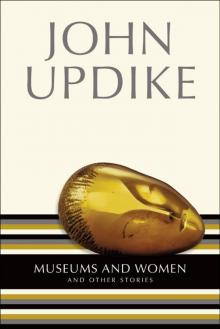 Museums and Women: And Other Stories
Museums and Women: And Other Stories My Father's Tears and Other Stories
My Father's Tears and Other Stories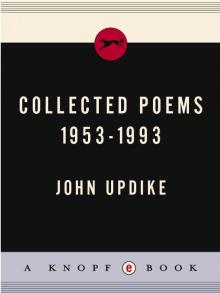 Collected Poems, 1953-1993
Collected Poems, 1953-1993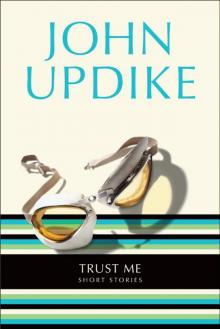 Trust Me: Short Stories
Trust Me: Short Stories Odd Jobs: Essays and Criticism
Odd Jobs: Essays and Criticism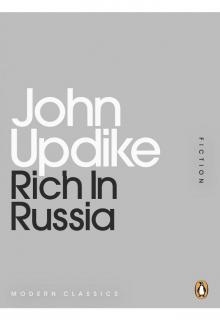 Rich in Russia
Rich in Russia Higher Gossip: Essays and Criticism
Higher Gossip: Essays and Criticism The Widows of Eastwick
The Widows of Eastwick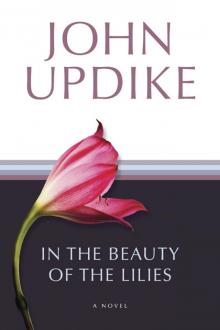 In the Beauty of the Lilies
In the Beauty of the Lilies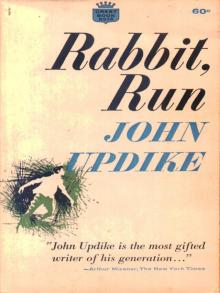 Rabbit, Run
Rabbit, Run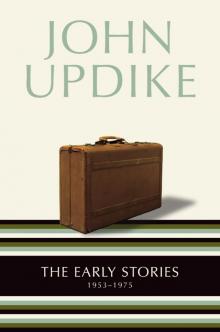 The Early Stories: 1953-1975
The Early Stories: 1953-1975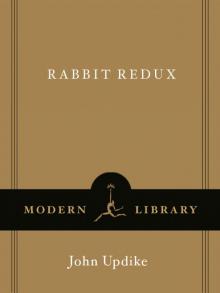 Rabbit Redux
Rabbit Redux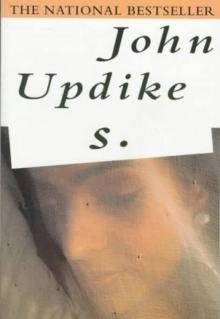 S.
S.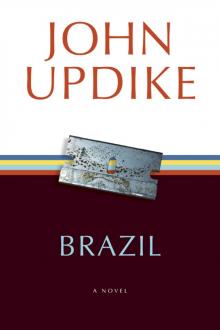 Brazil
Brazil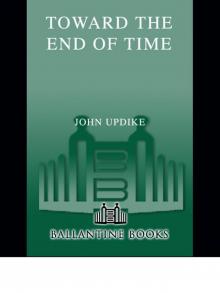 Toward the End of Time
Toward the End of Time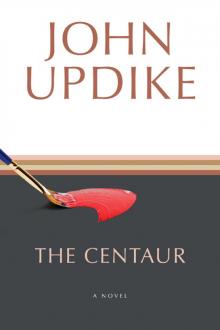 The Centaur: A Novel
The Centaur: A Novel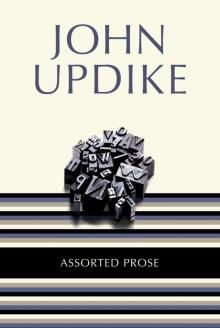 Assorted Prose
Assorted Prose Memories of the Ford Administration
Memories of the Ford Administration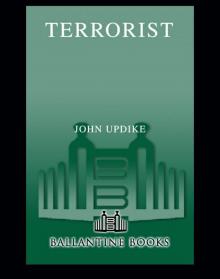 Terrorist
Terrorist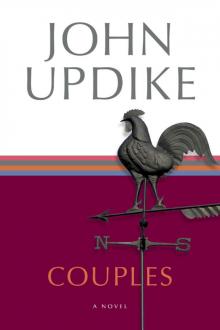 Couples: A Novel
Couples: A Novel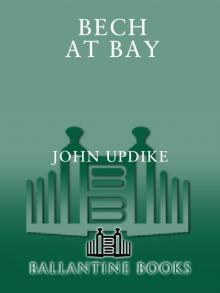 Bech at Bay
Bech at Bay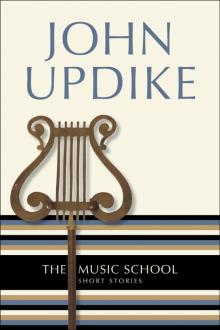 The Music School: Short Stories
The Music School: Short Stories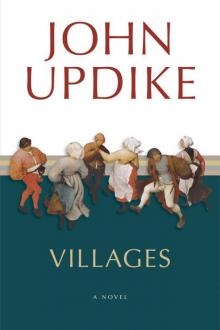 Villages
Villages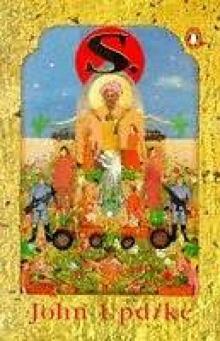 S
S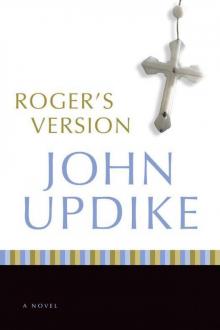 Roger's Version
Roger's Version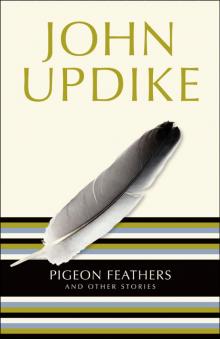 Pigeon Feathers
Pigeon Feathers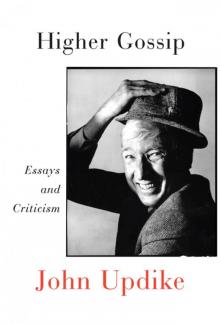 Higher Gossip
Higher Gossip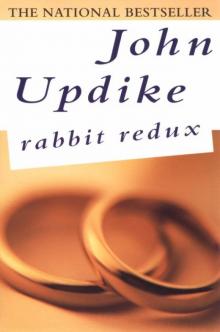 Rabbit Redux r-2
Rabbit Redux r-2 Memories of the Ford Administration: A Novel
Memories of the Ford Administration: A Novel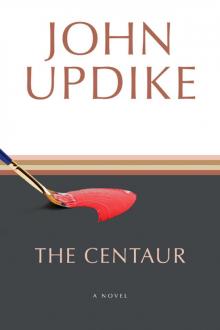 The Centaur
The Centaur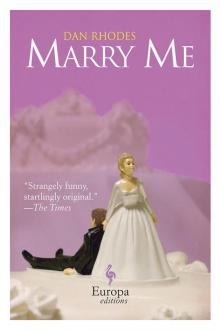 Marry Me
Marry Me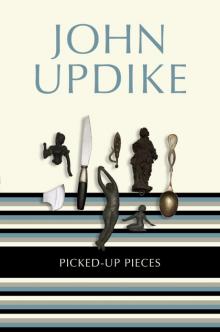 Picked-Up Pieces
Picked-Up Pieces Bech
Bech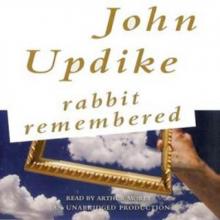 Rabbit Remembered
Rabbit Remembered Trust Me
Trust Me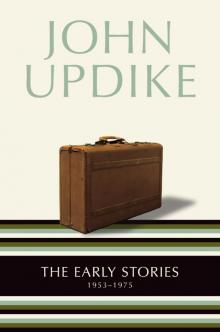 The Early Stories
The Early Stories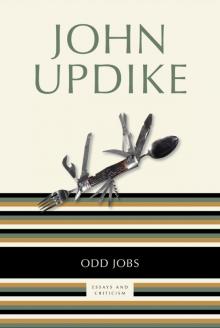 Odd Jobs
Odd Jobs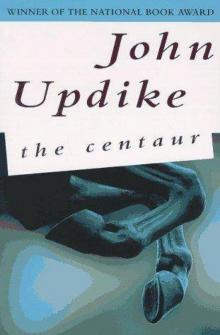 The Centaurus
The Centaurus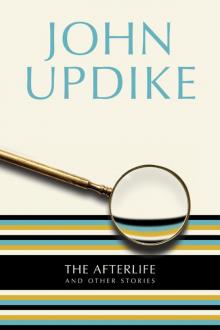 The Afterlife
The Afterlife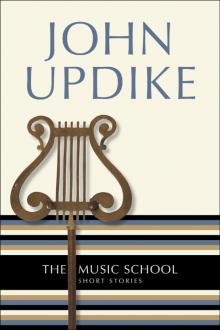 The Music School
The Music School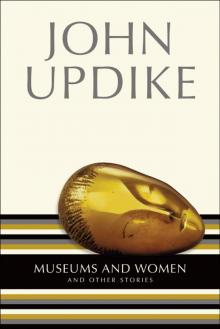 Museums and Women
Museums and Women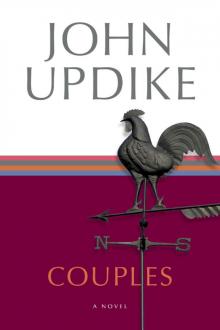 Couples
Couples